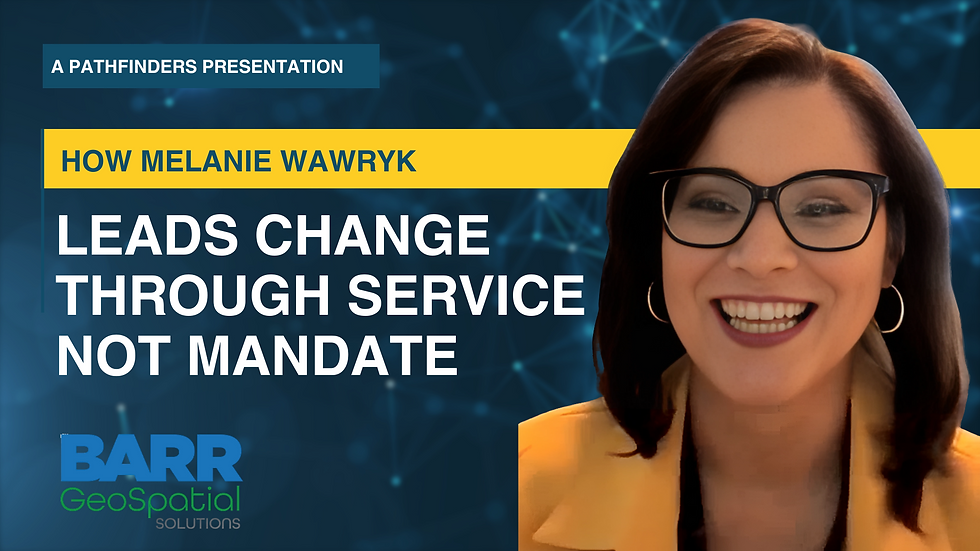Karen Stewart: From Hand-Drawn Maps to Smart Cities
- Jeff Lamb

- Apr 30, 2024
- 2 min read
Updated: Aug 29
When Karen Stewart tells people she works in GIS, most respond with a blank stare. So, she keeps it simple: "You know when you're using an app to find the nearest Starbucks? That's GIS."
But for Karen, GIS—Geographic Information Systems—is more than just technology. It's a way to understand the world, connect communities, and build a smarter future.
"We've been drawing maps since the beginning of time," she says. "GIS just brings it all together to tell a bigger story."
Karen's story began in the early 1980s with a graphics diploma, a love of art, and a job offer from BC Gas. She stepped into a cold, green-lit computer room, working overnight shifts on giant machines to turn paper survey maps into digital data. That was her first taste of GIS, and she never looked back.
As cities began to digitize their infrastructure, Karen found herself at the center of innovation. At the City of Surrey, she helped create one of the first online mapping systems, Cosmos, still in use today. But the road wasn’t always smooth. When she was promoted to GIS manager, she became the first woman to hold that title in British Columbia's local government.
"I had to go through psychometric testing to prove I could do the job," she recalls. "There was still skepticism about GIS—and about me."
Facing pressure to lay off staff, Karen chose action. She tracked every GIS request, mapped it to city budgets, and proved the team’s value. "We showed that most everything a local government does is tied to location. GIS fits in everywhere."
This clarity turned skeptics into allies. Instead of layoffs, her team grew. And that, Karen says, is the lesson: "Always be curious. Learn as much as you can."
Her path took her from municipal halls to national leadership at Esri Canada, and later to roles as CIO. But no matter the title, Karen's heart stayed with people.
"I love mentoring. Seeing someone grow in their career, knowing I played a small part—that’s what I’m proud of."
She also knows what it feels like to be overlooked. "Sometimes you know you can do the job, but you're not given the chance. Don't give up. Find where you fit, and keep going."
Now semi-retired, Karen is reflecting on her next first. She’s passionate about inclusivity in tech, open data, and mentoring the next generation of GIS leaders. Even her granddaughter swings in a special toddler seat at the park, a reminder that the right tools—designed with people in mind—make all the difference.
"GIS is a powerful way to get your point across," she says. "But it's also about community, about listening, and about fun. If you're not having fun, ask yourself why."







Comments